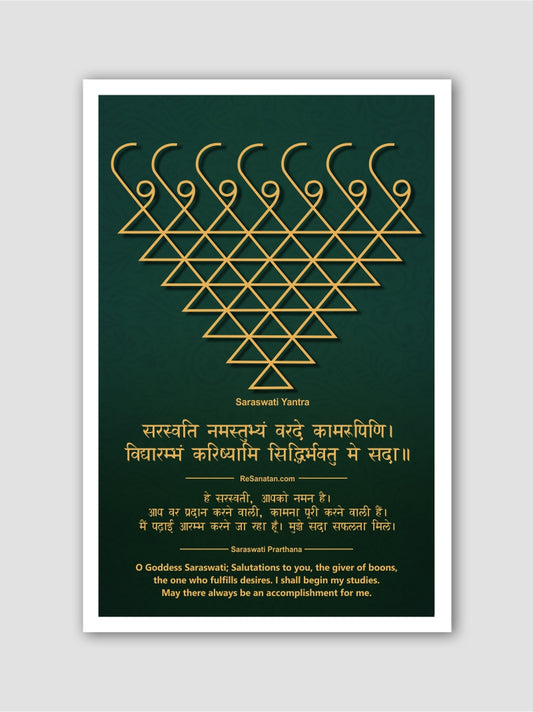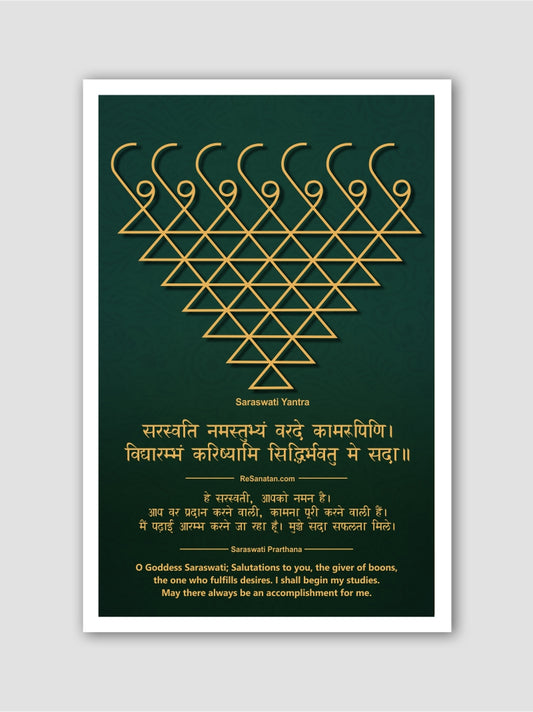Guru Purnima: Celebrating the Eternal Bond of Teacher and Disciple
Share
Guru Purnima, also known as Vyasa Purnima, is a significant festival celebrated by Hindus, Buddhists, and Jains across India, Nepal, and Bhutan. This auspicious day is dedicated to honoring and expressing gratitude to teachers, mentors, and spiritual guides, known as "Gurus." The word "Guru" is derived from Sanskrit, where "Gu" means darkness and "Ru" means dispeller. Thus, a Guru is one who dispels the darkness of ignorance and brings enlightenment and knowledge.

Historical and Spiritual Significance of Guru Purnima in Hinduism
The Legend of Sage Vyasa
Guru Purnima is intrinsically linked with the reverence of Sage Vyasa, a paramount figure in Hindu tradition. Sage Vyasa, also known as Veda Vyasa or Krishna Dvaipayana Vyasa, is credited with composing the Mahabharata, one of the greatest epics of Indian history. Vyasa's contribution to Hindu literature is monumental, as he also classified the Vedas into four parts—Rigveda, Samaveda, Yajurveda, and Atharvaveda—making the knowledge more accessible to people. Furthermore, he authored the eighteen Puranas, the Brahma Sutras, and the Bhagavata Purana.
The significance of Sage Vyasa is such that Guru Purnima is also celebrated as Vyasa Purnima. It is believed that Vyasa was born on this day and began writing the Brahma Sutras. The festival, therefore, serves as an occasion to honor his immense contributions to Hindu philosophy, literature, and spirituality. Devotees perform Vyasa Puja, offering flowers, fruits, and other items to his idol or image, reciting hymns and mantras in his honor.
The Role of the Guru in Hindu Tradition
In Hinduism, the Guru holds a paramount position. The Guru is not merely a teacher but a guide, mentor, and spiritual leader who leads disciples from ignorance to knowledge, from darkness to light. The Guru-shishya (teacher-student) tradition is a revered practice in Hindu culture, emphasizing the importance of the transmission of spiritual knowledge through direct personal instruction.
The role of the Guru is encapsulated in the Guru Gita, a sacred text within the Skanda Purana. The Guru Gita highlights the Guru's essential role in the disciple's spiritual journey, stating that the Guru is the embodiment of Brahma (the creator), Vishnu (the preserver), and Mahesh (the destroyer). This underscores the Guru's role as the ultimate source of knowledge and wisdom.
Spiritual Practices and Rituals
Guru Purnima is marked by various spiritual practices and rituals aimed at honoring and seeking blessings from Gurus. These rituals reflect the deep-seated respect and devotion that disciples hold for their spiritual guides.
1. Guru Puja: One of the central rituals of Guru Purnima is the Guru Puja. Disciples gather to perform a special puja to honor their Gurus, both living and departed. This ritual involves offering flowers, fruits, sweets, and other sacred items to the Guru, accompanied by the recitation of hymns and mantras. The puja signifies the disciple's devotion and gratitude towards the Guru.
2. Paduka Puja: In many traditions, disciples perform Paduka Puja, where they worship the Guru's sandals (padukas). The padukas symbolize the Guru's feet, representing humility and surrender to the Guru's teachings. The ritual is performed with great reverence, acknowledging the Guru's role in guiding the disciple on the spiritual path.
3. Satsang and Discourses: Spiritual gatherings known as satsangs are organized, where devotees come together to sing bhajans (devotional songs), listen to discourses on spiritual teachings, and discuss the wisdom imparted by their Gurus. These gatherings foster a sense of community and collective spiritual growth.
4. Meditation and Reflection: Guru Purnima is also a day for personal introspection and meditation. Disciples reflect on their spiritual journey, the teachings of their Guru, and how these teachings have influenced their lives. Meditation sessions are conducted to deepen the connection with the Guru's wisdom and to seek inner guidance.
5. Charitable Acts and Seva (Service): Many devotees engage in acts of charity and service on Guru Purnima. Seva, or selfless service, is considered a way to honor the Guru by embodying their teachings of compassion, kindness, and humility. Community service activities such as feeding the poor, donating to charities, and helping those in need are common practices on this day.
Guru Purnima in Ashrams and Temples
Ashrams and temples play a significant role in the celebration of Guru Purnima. These spiritual centers organize elaborate ceremonies, including special pujas, aartis (devotional songs), and cultural programs. Devotees gather in large numbers to participate in these events, seeking the blessings of the resident spiritual leaders.
In many ashrams, the day begins with a ceremonial bathing of the Guru's idol or padukas, followed by dressing them in new clothes and adorning them with flowers and jewelry. The puja is then performed with the chanting of Vedic mantras and hymns. The atmosphere in these spiritual centers is charged with devotion, reverence, and a sense of collective spiritual upliftment.
The Importance of the Guru in Personal Transformation
The Guru's role in an individual's life goes beyond imparting knowledge; it encompasses guiding the disciple through personal transformation and spiritual evolution. The teachings of the Guru help disciples overcome their inner struggles, realize their true potential, and attain a higher state of consciousness.
The relationship between the Guru and the disciple is one of deep trust and mutual respect. The disciple's faith in the Guru's wisdom and the Guru's unwavering commitment to the disciple's growth create a bond that transcends the physical realm. This spiritual connection is celebrated and reinforced on Guru Purnima, reminding disciples of the profound impact their Gurus have on their lives.
Guru Purnima 2025
In 2025, Guru Purnima will be celebrated on Thursday, July 10, a day dedicated to honoring and expressing gratitude to spiritual teachers and mentors. The festival falls on the full moon day (Purnima) in the month of Ashadha, and holds great significance in Hindu, Buddhist, and Jain traditions. The Purnima Tithi begins at 1:36 AM on July 10 and ends at 2:06 AM on July 11, providing a full day for devotees to offer prayers, perform rituals, and seek blessings from their gurus. On this auspicious occasion, disciples across India and beyond pay homage to their teachers for guiding them on the path of wisdom, righteousness, and enlightenment.

Popular Sanskrit Quotes and Wishes for Guru Purnima
1. गुरुर ब्रह्मा गुरुर विष्णुः गुरुर देवो महेश्वरः।
गुरुः साक्षात् परब्रह्म तस्मै श्री गुरवे नमः॥
Transliteration: Gurur Brahma Gurur Vishnuh Gurur Devo Maheshwarah।
Guruh Sakshat Parabrahma Tasmai Shri Gurave Namah॥
Meaning in English: The Guru is Brahma (the Creator), the Guru is Vishnu (the Preserver), the Guru is Maheshwara (Shiva, the Destroyer). The Guru is verily the Supreme Brahman. Salutations to that Guru.
Meaning in Hindi: गुरु ब्रह्मा हैं, गुरु विष्णु हैं, गुरु देव महेश्वर हैं। गुरु साक्षात् परब्रह्म हैं। उस गुरु को प्रणाम।
2. अज्ञानतिमिरान्धस्य ज्ञानाञ्जनशलाकया।
चक्षुरुन्मीलितं येन तस्मै श्री गुरवे नमः॥
Transliteration: Ajnana-Timira-Andhasya Jnananjana-Shalakaya।
Chakshurunmilitam Yena Tasmai Shri Gurave Namah॥
Meaning in English: The Guru who applies the collyrium of knowledge to the eyes blinded by the darkness of ignorance, opening my eyes. Salutations to that Guru.
Meaning in Hindi: जो गुरु अज्ञान के अंधकार में अंधे हुए व्यक्ति की आँखों में ज्ञान का अंजन लगाते हैं और आँखें खोलते हैं, उस गुरु को प्रणाम।
3. दुग्धेन धेनुः कुसुमेन वल्ली
शीलेन भार्या कमलेन तोयम् ।
गुरुं विना भाति न चैव शिष्यः
शमेन विद्या नगरी जनेन ॥
Transliteration: Dugdhena Dhenuh Kusumena Valli
Shilena Bharya Kamalena Toyam।
Gurum Vina Bhati Na Chaiva Shishyah
Shamena Vidya Nagari Janena॥
Meaning in English: The cow shines with milk, the vine with flowers, the wife with virtue, and the lotus with water. Without the Guru, the disciple does not shine; neither does knowledge nor the city without people.
Meaning in Hindi: गाय दूध से शोभित होती है, लता फूलों से, पत्नी सदाचार से और कमल जल से। गुरु के बिना शिष्य नहीं शोभित होता, और न ही शांति से विद्या, और न ही जनों से नगरी।
4. गुरुकृपा ही केवलम् शिष्यपरमंगतिः।
Transliteration: Gurukripa Hi Kevalam Shishyaparamangatih।
Meaning in English: The Guru's grace alone is the highest attainment for the disciple.
Meaning in Hindi: गुरु की कृपा ही शिष्य की परम उपलब्धि है।
5. विद्वत्त्वं दक्षता शीलं संक्रान्तिरनुशीलनम्।
शिक्षकस्य गुणाः सप्त सचेतस्त्वं प्रसन्नता॥
Transliteration:
Vidvattvam Dakṣhatā Śīlam Saṅkrāntiranushīlanam।
Śikṣhakasya Guṇāḥ Sapta Saceṭastvam Prasannatā॥
Meaning in English:
- Vidvattvam - Knowledge
- Dakṣhatā - Skillfulness
- Śīlam - Good character
- Saṅkrāntiḥ - The ability to transfer knowledge
- Anuśīlanam - Consistent practice
- Saceṭastvam - Awareness
- Prasannatā - Cheerfulness
These are the seven qualities of a teacher.
Meaning in Hindi:
- विद्वत्त्वं - ज्ञान
- दक्षता - कुशलता
- शीलं - अच्छा चरित्र
- संक्रान्तिः - ज्ञान को स्थानांतरित करने की क्षमता
- अनुशीलनम् - निरंतर अभ्यास
- सचेतस्त्वं - जागरूकता
- प्रसन्नता - प्रसन्नता
ये शिक्षक के सात गुण हैं।
6. विनयफलं शुश्रूषा गुरुशुश्रूषाफलं श्रुतं ज्ञानम्।
ज्ञानस्य फलं विरतिः विरतिफलं चाश्रवनिर्वोधः॥
Transliteration:
Vinayaphalaṃ śuśrūṣā guruśuśrūṣāphalaṃ śrutaṃ jñānam।
Jñānasya phalaṃ viratiḥ viratiphalaṃ cāśravanirodhaḥ॥
Meaning in English:
- Vinayaphalaṃ śuśrūṣā - The fruit of humility is service
- Guruśuśrūṣāphalaṃ śrutaṃ jñānam - The fruit of serving the Guru is knowledge
- Jñānasya phalaṃ viratiḥ - The fruit of knowledge is detachment
- Viratiphalaṃ cāśravanirodhaḥ - The fruit of detachment is the cessation of desires
Meaning in Hindi:
- विनयफलं शुश्रूषा - विनय का फल सेवा है
- गुरुशुश्रूषाफलं श्रुतं ज्ञानम् - गुरु की सेवा का फल ज्ञान है
- ज्ञानस्य फलं विरतिः - ज्ञान का फल वैराग्य है
- विरतिफलं चाश्रवनिर्वोधः - वैराग्य का फल इच्छाओं का निरोध है
7. गुरौ न प्राप्यते यत्तन्नान्यत्रापि हि लभ्यते।
गुरुप्रसादात्सर्वं तु प्राप्नोत्येव न संशयः॥
Transliteration:
Gurau na prāpyate yattannānyatrāpi hi labhyate।
Guruprasādāta sarvaṃ tu prāpnotyeva na saṃśayaḥ॥
Meaning in English:
- Gurau na prāpyate yattannānyatrāpi hi labhyate - What is not attained from the Guru cannot be obtained elsewhere.
- Guruprasādāta sarvaṃ tu prāpnotyeva na saṃśayaḥ - By the Guru's grace, everything is indeed attained; there is no doubt about it.
Meaning in Hindi:
- गुरौ न प्राप्यते यत्तन्नान्यत्रापि हि लभ्यते - जो गुरु से प्राप्त नहीं होता, वह कहीं और भी प्राप्त नहीं होता।
- गुरुप्रसादात्सर्वं तु प्राप्नोत्येव न संशयः - गुरु की कृपा से सब कुछ प्राप्त होता है, इसमें कोई संदेह नहीं है।
The Role of the Guru in Modern Times
In the contemporary world, the role of the Guru remains as significant as ever. While traditional Gurus continue to guide their disciples in spiritual matters, modern Gurus may take on various forms, including academic teachers, life coaches, and mentors in different fields. The essence of the Guru-disciple relationship lies in the transfer of knowledge, wisdom, and values, which helps individuals navigate through the complexities of life.
Conclusion
Guru Purnima is more than just a festival; it is a celebration of the timeless bond between the Guru and the disciple. It serves as a reminder of the invaluable role of teachers and mentors in shaping our lives and guiding us towards a path of knowledge, wisdom, and enlightenment. As we celebrate Guru Purnima 2024, let us take a moment to express our heartfelt gratitude to all the Gurus who have illuminated our lives with their wisdom and guidance. Let us honor their contributions by living a life that reflects the values and teachings they have imparted to us.
























